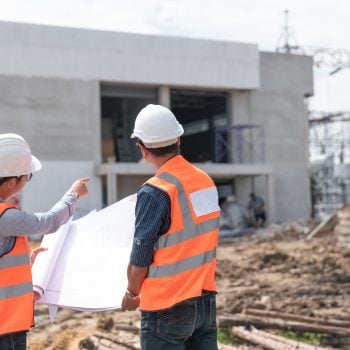It doesn’t have to be this way…Waking up to ESG
With all the hype and hoopla of COP26, we’ve heard a lot recently about sustainability, and quite right too you might say: but what does it all mean for Construction? Well, for a start, the Glasgow Conference noted (rightly) that urban infrastructure has historically been responsible for about 40% of global emissions, which is why the UK pledged £27.5 Million to its new Climate Action Programme (www.lordslibrary.parliament.uk): aimed at cities looking to achieve net zero. And, at large, the Conference pledged to find a sustainable solution for the climate consequences of rapidly expanding urban conurbations, where the International Climate Finance initiative will help cities across Africa, Asia and Latin America develop towards a more sustainable future, by becoming carbon neutral before 2050: climate smart buildings, less CO2 and more effective risk planning. Hurrah for all that…
After all, as the UK Business and Energy Minister, Lord Callanan put it, “From our homes and workplaces to our towns and cities, the buildings we live in are a fundamental part of our daily lives, but they are also a significant source of global emissions...that’s why we have to seize the moment and set bold targets…to work together as a global community.”
ESG: it's not just Sustainability
But, of course, a building doesn’t magically become sustainable just because someone bolts a solar panel to the wall, or plants some grass on the roof: still less by pumping insulating foam into the walls, however high performing that might be (it’s a given for modern buildings anyway). No… sustainability has to be built into the DNA of the construction project itself, and that means taking collective responsibility for everything from employee empowerment (sourcing jobs locally), community engagement (building better to sustain the local ecosystem), and adopting procurement strategies that don’t mean endless convoys of fuel guzzling, smoke belching trucks, bringing materials from tens or even hundreds of miles away.
That’s the point where collective commitment meets ESG (Environment, Social and Governance)…and over the long run, it’s ESG that matters. So lets take a closer look at the third of those points…
Careful management of manufacturing logistics and construction sequencing will inevitably result in reduced levels of waste, as well as reducing overall build costs: without any compromise in quality. Just think about it for a moment…shipping in all that steel and concrete to a building site, guessing in broad terms what’s going to be used, that’s like filling your plate at an “eat all you can” restaurant: you always end up with some left over, because the focus is on output, not what’s actually needed.
Which is exactly why you’ll find so many piles of rusting steel, warped timber and broken brickwork on any conventional building site: once the workmen have slung their shovels over their shoulders and departed, almost none of the waste they leave behind can be recycled. It’s carted off in yet more smoke belching trucks, unceremoniously dumped in a landfill, and creates more long-term damage for our precious planet.
That’s the dictionary definition of what sustainability, and ESG, doesn’t mean.
But by carefully calibrating usage requirements, and prefabricating units offsite for planned assembly where they’re needed, Modular Construction produces buildings that are easily replaced, augmented or re-used for the future: adapting readily to changing technologies (think about lower office occupancy post COVID…think about Zoom): and adapting too as the building itself calls for adaptation (more or fewer pupils in a school…more or fewer tenants in a housing block), modular units can be shipped in when needed, taken away and used elsewhere when they’re not. No more rusting girders, no more useless timber: nothing to be shipped off and dumped.
It's the difference between ordering all you can eat, and cooking what you need.
Modular buildings are future proofed by design: they offer sustainable solutions that tick all the boxes… isn’t it about time to wake up to the future?
Executive Overview
Traditional construction is inefficient and unprofitable: it couldn’t be worse equipped for a future that belongs to ESG. No wonder, then, that Modular Construction is making such a difference.
Invest in Red Ribbon RE RISE India Real Estate Fund

Red Ribbon RE RISE India Real Estate Fund is a multi asset class closed-end fund registered in Luxembourg offering investors the opportunity to participate in Growth and Emerging Markets and Mainstream Impact Investments, such as India, that offer returns rarely available in western markets.




.jpg?width=150&height=150&name=shutterstock_1421446100%20(1).jpg)



Leave a Reply